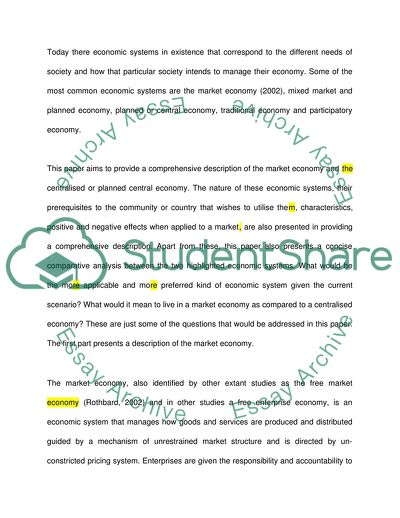Cite this document
(Market Society or a Centralized Economy Assignment, n.d.)
Market Society or a Centralized Economy Assignment. https://studentshare.org/sociology/1706931-would-you-rather-live-in-a-market-society-or-a-centralised-economy-explain-what-you-understand-by-these-terms-and-outline-the-reasons-for-your-preference
Market Society or a Centralized Economy Assignment. https://studentshare.org/sociology/1706931-would-you-rather-live-in-a-market-society-or-a-centralised-economy-explain-what-you-understand-by-these-terms-and-outline-the-reasons-for-your-preference
(Market Society or a Centralized Economy Assignment)
Market Society or a Centralized Economy Assignment. https://studentshare.org/sociology/1706931-would-you-rather-live-in-a-market-society-or-a-centralised-economy-explain-what-you-understand-by-these-terms-and-outline-the-reasons-for-your-preference.
Market Society or a Centralized Economy Assignment. https://studentshare.org/sociology/1706931-would-you-rather-live-in-a-market-society-or-a-centralised-economy-explain-what-you-understand-by-these-terms-and-outline-the-reasons-for-your-preference.
“Market Society or a Centralized Economy Assignment”. https://studentshare.org/sociology/1706931-would-you-rather-live-in-a-market-society-or-a-centralised-economy-explain-what-you-understand-by-these-terms-and-outline-the-reasons-for-your-preference.


